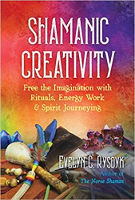
Image by Enrique Meseguer
Narrated by Marie T. Russell.
You can program your subconscious before you go to sleep, asking it to provide creative solutions through dreams. The subconscious can be creative when you are sleeping. The prolific inventor Thomas Edison never even napped without programming his sleep time. He is famously quoted as saying, “Never go to sleep without a request to your subconscious.”
Your brain naturally flows through a series of brain states when falling asleep, from active beta, to relaxed alpha, and into theta before entering into the delta sleep wave. Once asleep, your subconscious mind is able to solve problems and be creative, especially when you are deeply in the delta wave state. It can accomplish this because the linear mind is completely off-line during that period.
In this way, your subconscious becomes what professor and neurobiologist Stuart Thompson describes as “your tireless co-conspirator.” It is also why I suggest clearing it of unbeneficial beliefs: that old clutter just takes up space that you want for your creative energy to flow.
Before Going to Bed
Take time before going to bed to think about what you want to accomplish or what problem you want to solve. Look at it from as many angles as you can and develop a request(s) about it for your subconscious mind. Keep your requests simply worded, and make them clear. Finally, write them down, and then get into bed. As you are falling into sleep, visualize and feel what it is you want the subconscious to work on as if it is already accomplished, and then use your voice to say, “I am grateful to my mind for providing me input about [insert request here].”
The ideas, concepts, and solutions the subconscious develops during this time can be harvested in the morning if you preserve the time your mind begins to wake up for that purpose. This means allowing yourself to linger in that hypnagogic state before the linear mind fully goes back online for your day.
If I wake up in the night, I allow the nonlinear mind free rein again. If I get a wonderful idea at that time, I don’t engage the linear mind with writing as it can keep me from returning to sleep. Instead, I ask my mind to remember it for the morning.
Having practiced this for years, the idea that came to me in the night will surface again in my morning time. Make sure you use your sketch/notebook to capture the ideas that bubble forth when you are fully awake.
A wonderful step toward this is to begin intentionally shaping and recalling your dreams. Giving messages to the subconscious during the time just before sleep, when your brain is producing theta waves, can be incredibly useful in altering internal limitations. This time period can also turn your dream time into creative time by using similar methods.
Shaping and Remembering Your Dreams
For this you will need your sketch/notebook to capture dream imagery that may have arisen while you were dreaming. Place that and a small flashlight directly next to your bed so that it is easily accessible in the night.
-
Create an intention that you want your dreams to address. This is called shaping your dreamscape. In essence, you are giving a problem to solve to the subconscious mind to play with while you are sleeping.
-
Write that intent on a fresh page in your sketch/notebook.
-
Climb into bed, and get comfortable.
-
Allow yourself to breathe deeply and restfully.
-
Repeat the intention you have written down as a quiet mantra until you fall asleep.
-
When you are aware you have had a dream, stay in the same position with your eyes closed and recall the dream in as much detail as you are able.
-
Summarize the dream in as few words as possible into your sketch/notebook, and go back to sleep.
-
In the morning, expand on your brief notes by writing down the dream in as much detail as you can remember.
Do this with all of your dreams and resultant felt experiences. Keep track of all new realizations or changes of awareness you have as the year progresses.
Process Questions
What did it feel like to think about shaping your dreams?
How many details of your dreams did you remember?
How do you think you might remember even more?
Pay attention to any patterns you begin to notice as you continue this process.
As you practice this, don’t worry if other dream material arises, as this may be something your subconscious is asking your conscious mind to address. This is a fertile opportunity for the waking and subconscious minds to enter into a dialogue. If that happens, remember that given the opportunity, our dreams will lead us to and through the transformation of unwanted experiences. Our self longs for wholeness.
Also, if you awaken without a dream, just repeat the steps and go back to sleep. With practice, this can be a powerful tool. Keep repeating this process until you have the answers you need.
Trust Your Own Process
To give you some encouragement, I’ll share a little story of just how effective this process is in getting things done. Over twenty-five years ago, my partner and I were about to teach our first graduate-level training in advanced shamanism and shamanic healing. We had accumulated a great group of people who had already taken our apprenticeship program and wanted to study further.
Using our own ideas, we put together a rough framework for the two-year-long program. Using the resource of shamanic journeying described, we expected to get clarity about what specific exercises would be best for each session.
No matter how much we tried, we were stonewalled. I finally asked the spirit of my great-great-grandmother, who is my primary tutelary resource, why this was happening. She told me this was to be a new “trust walk” in my process and that each session would be given to me in dreams just prior to the session.
Needless to say, this freaked my partner and me out! We had a good group of people registered, and we certainly didn’t want to disappoint them. However, I trusted this spirit implicitly, and so I bravely proceeded to the facility we had rented for the program with only the barest threads of a curriculum.
At night, I asked for what we were to do the next morning. Each day, I napped after lunch to get the details about the afternoon session and took another short nap after supper to receive the evening session’s material.
Believe it or not, the program was amazing. My creative subconscious mind worked in concert with the spiritual guidance I received to make a truly transformative program, but more important, I had learned to trust my own process to a much deeper degree. Nothing like a trial by fire to give you a sense of accomplishment.
I had the incredible realization that my creative energy was connected to the ultimate creative energy of the cosmos and so was actually unlimited. It’s also why I feel it is so important to stimulate your creativity. You have those same connections: no one is separate from the larger cosmos. You and I and everything we know were born from it and meant to express its creative energy.
Copyright 2022. All Rights Reserved.
Printed with permission of the publisher,
Destiny Books, an imprint of Inner Traditions Intl.
Article Source:
Shamanic Creativity
Shamanic Creativity: Free the Imagination with Rituals, Energy Work, and Spirit Journeying
by Evelyn C. Rysdyk In this step-by-step practical guide to enhancing creative energy, Evelyn Rysdyk explains how, from the shamanic perspective, creativity--or creative energy--is a life-giving force that frees the imagination, supports innovation, and awakens unique ways of thinking and feeling that can transform your life. She explores how to release creativity-blocking patterns, reprogram the subconscious, engage the “right brain,” boost imagination, overcome anxiety and destructive emotions, and become much more creative in daily life.
In this step-by-step practical guide to enhancing creative energy, Evelyn Rysdyk explains how, from the shamanic perspective, creativity--or creative energy--is a life-giving force that frees the imagination, supports innovation, and awakens unique ways of thinking and feeling that can transform your life. She explores how to release creativity-blocking patterns, reprogram the subconscious, engage the “right brain,” boost imagination, overcome anxiety and destructive emotions, and become much more creative in daily life.
Examining creative energy as a natural phenomenon similar to the tides, the author provides suggestions for when your creative energy is at a low tide as well as offering shamanic techniques for dealing with insecurities related to your creative pursuits and overcoming dysfunctional subconscious perceptions.
For more info and/or to order this book, click here. Also available as a Kindle edition.
About the Author
 Evelyn C. Rysdyk is an internationally recognized shamanic practitioner and author of several books, including The Norse Shaman, Spirit Walking, and The Nepalese Shamanic Path.
Evelyn C. Rysdyk is an internationally recognized shamanic practitioner and author of several books, including The Norse Shaman, Spirit Walking, and The Nepalese Shamanic Path.
Along with her writings, she is an impassioned teacher and a featured presenter for Sounds True, The Shift Network, and other international and online programs. She finds creative inspiration and renewal on the coast of Maine.
Visit her website at EvelynRysdyk.com
More books by this Author





























